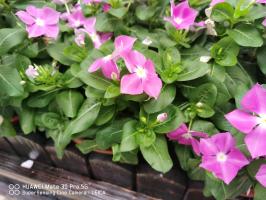Introduction
Chloroplasts are organelles found in plant and algal cells, which play an essential role in the process of photosynthesis. Photosynthesis allows plants to convert sunlight, water, and carbon dioxide into usable energy, which fuels their growth and survival. In this article, we will explore the functions of chloroplasts in plant cells, including their structure, organization, and processes.
Structure of Chloroplasts
Chloroplasts are found in the cytoplasm of plant and algal cells and are oval-shaped organelles that are about 5-10 micrometers in length. They are enclosed by two membranes, the inner and outer envelope membranes, which are separated by an intermembrane space. Inside the chloroplast, there are stacked thylakoid membranes, which contain the pigment Chlorophyll. The thylakoid membranes are organized into grana, which are stacks of thylakoids, and stroma lamellae, which are connections between grana. The stroma, which is a fluid-filled space, surrounds the thylakoid membranes and is where the enzymes, DNA, and ribosomes required for chloroplast function are located.
Functions of Chloroplasts
Chloroplasts are responsible for carrying out the process of photosynthesis, which involves converting energy from sunlight into chemical energy that can be used by plants. Chloroplasts contain pigments, including Chlorophyll, which absorb light energy from the sun. This light energy is used to drive a series of chemical reactions that convert carbon dioxide and water into energy-rich molecules, such as glucose. The overall process of photosynthesis can be divided into two stages: the light-dependent reaction, which occurs in the thylakoid membranes, and the light-independent reaction, which occurs in the stroma.
Light-Dependent Reactions
The light-dependent reactions of photosynthesis occur in the thylakoid membranes and involve capturing energy from sunlight and converting it into chemical energy. The pigments in the chloroplasts, including Chlorophyll, absorb the energy from sunlight and transfer it to other molecules in the thylakoid membrane. This energy is then used to pump protons from the stroma into the thylakoid space, creating a concentration gradient. This gradient drives the generation of ATP, which is an energy-rich molecule that can be used by cells. The light-dependent reactions also produce a molecule called NADPH, which is used in the light-independent reactions.
Light-Independent Reactions
The light-independent reactions of photosynthesis occur in the stroma of the chloroplasts and involve using the chemical energy produced in the light-dependent reactions to produce glucose. The light-independent reactions are also known as the Calvin cycle. The first step in the Calvin cycle is the fixation of CO2, which is converted into a molecule called ribulose bisphosphate. This molecule is then converted into a series of other molecules, using the energy provided by ATP and NADPH, before eventually being converted into glucose. The glucose can then be used by the plant as an energy source for growth and metabolism.
Conclusion
Chloroplasts are essential organelles in plant and algal cells that are responsible for carrying out the process of photosynthesis. They play a vital role in converting energy from sunlight into usable energy for the plant. Chloroplasts are organized into a complex structure of membranes and compartments that allow them to carry out the light-dependent and light-independent reactions that make up the process of photosynthesis. Understanding the functions of chloroplasts is crucial for understanding the biology of plants and how they grow and thrive in their environment.

 how many times do yo...
how many times do yo... how many planted tre...
how many planted tre... how many pine trees ...
how many pine trees ... how many pecan trees...
how many pecan trees... how many plants comp...
how many plants comp... how many plants can ...
how many plants can ... how many plants and ...
how many plants and ... how many pepper plan...
how many pepper plan...































